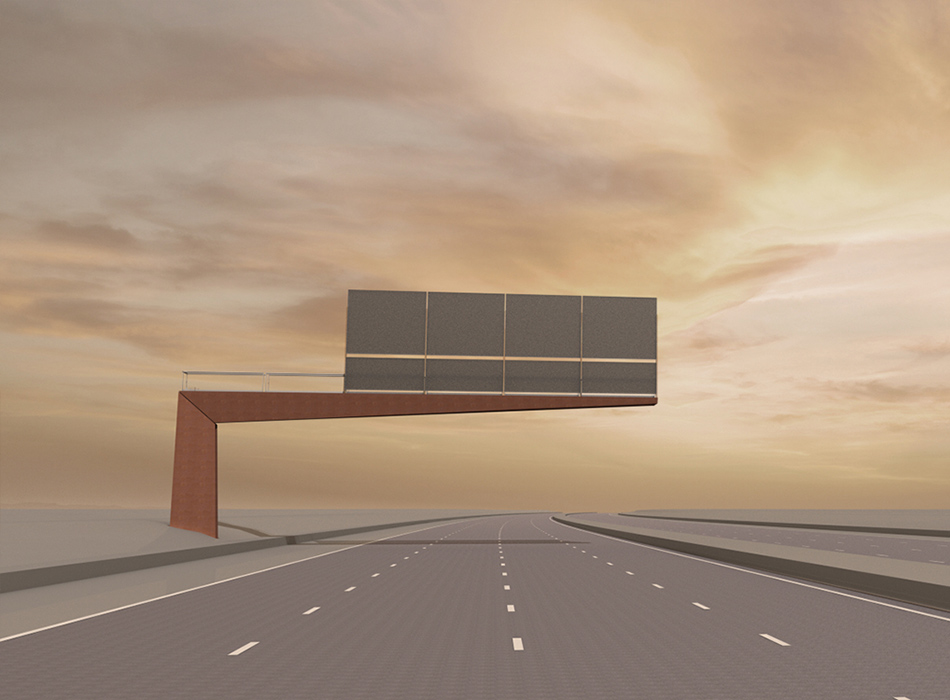The competition was organised by National Highways in conjunction with the Royal Institute of British Architects (RIBA), with 32 entries from architectural firms from across the UK and Europe.
The winning entry, created by Useful Studio, features a simple, pared-back design approach. It was chosen by the judging panel for its elegance and simplicity, and how cohesive the design concept was across a range of different structures. As well as a modern look, it will also have less impact on the environment, with a projected reduced carbon footprint compared to current gantries.
Useful Studio will now work with National Highways to develop its design concept, with a view to it becoming the standard design for new roads and major upgrades, beginning in two years’ time.
The winning entry uses less steel than existing designs, meaning less embodied carbon, and the use of pre-weathered rather than painted steel. The design follows existing best-practice from other highway structures and ages better than painted steel, meaning potentially lower maintenance requirements and fewer lane closures and delays for drivers.
It can be adapted for different types of structures including those spanning all carriageways and roadside signs. There currently are 3,500 existing gantries, but National Highways will not be immediately replacing structures.
Roads Minister Richard Holden said:
"Congratulations to Useful Studios and National Highways for their success in creating a modern, secure design that is set to redefine the look and feel of our motorways and roads.
"Their innovative approach is bound to improve the daily journeys of countless motorists while also contributing to a more sustainable future.”
Although security issues did not form part of the original specification, the new design will be more resilient to trespassers due to entry being concealed within the pillars, making it more difficult to access without authorisation.
A design by John McAslan+Partners won second place in the competition and three other concepts were highly commended by the judging panel, which was made up of experts in the architectural and highway fields.
In selecting John McAslan+Partners as the runner-up, the judging panel admired the clarity and dynamism of the proposition which articulated the distinction between a sculptural primary mast and cable-stayed lightweight modular gantry truss, that had the potential to be developed into an elegant family of structures.
Commended schemes
Kevin Kelly Architects and Stand Engineers
This submission was commended by the judging panel for its incorporation and best proposed use of timber componentry.
Hooman Talebi with Farshad Nasiri, Ehsan Masoud, Minoo Mashhadi, Raziyeh Rasapour, and Homa Farjadi (Design Advisor)
This submission was commended by the judging panel for its proposed use of digital screen technology to turn the gantry into a singular information-based object.
Knight Architects
This submission was commended by the judging panel for proposing the best challenge to the continued and future need for overhead gantry structures.







